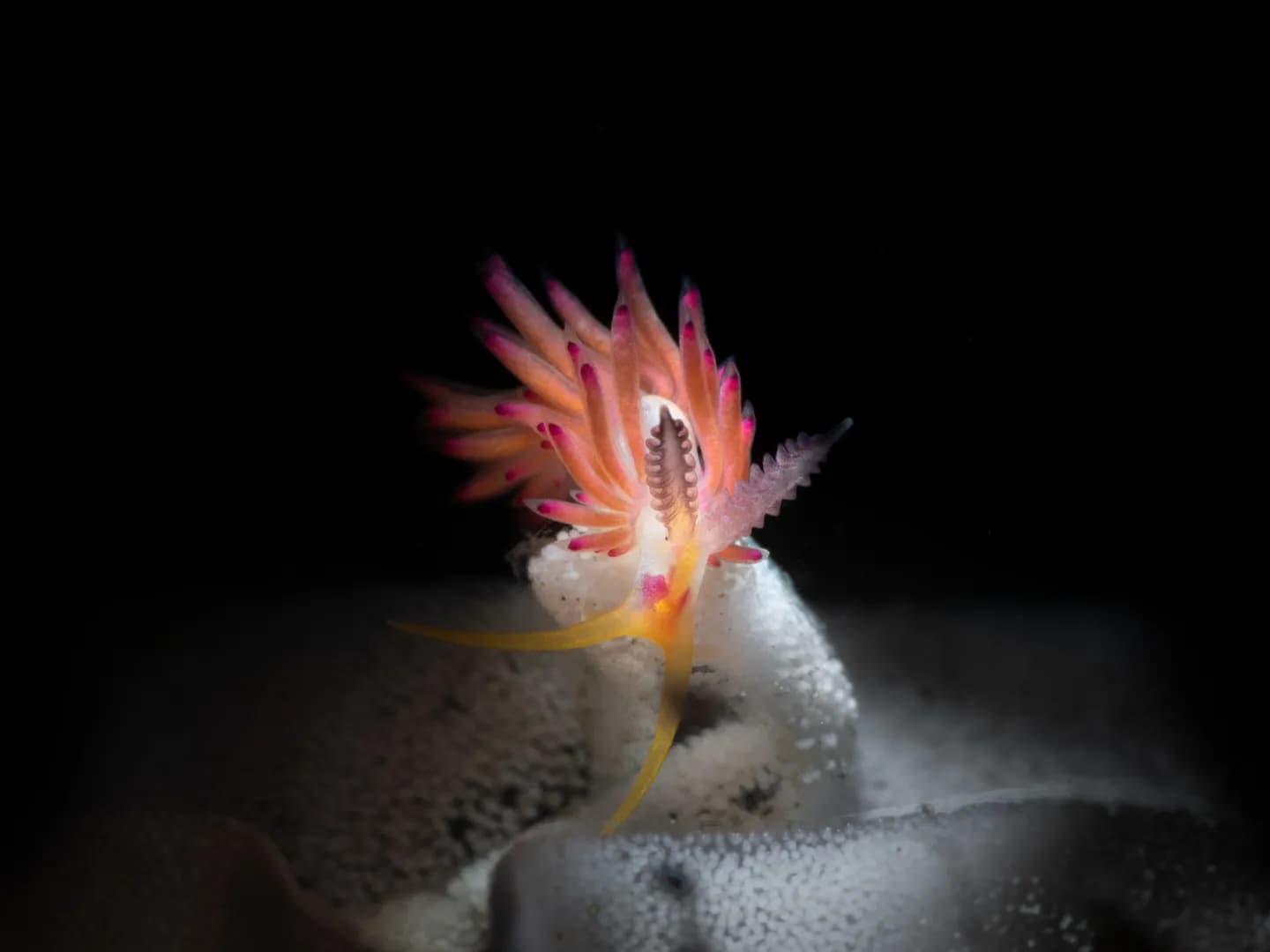Lionfish in the Lembeh Strait, North Sulawesi

The Lembeh Strait is renowned for the micro marine life that resides there. However, not all critters are microscopic, in fact, some are quite large, flamboyant and even dangerously beautiful.
An Introduction to Lionfish
Lionfish are a close relative to scorpionfish (both belonging to the Scorpaenidae family). This similarity is visually most obvious when looking at the side profile of a lionfish head. The shape of the head, eye positioning and snout are almost identical to that of their counterparts. They also share in common with scorpionfish that they have extremely venomous spines – but that’s where that similarity ends. While scorpionfish tend to be bottom dwellers and have spines that are short and close to the body, the lionfishes’ spines are elongated, almost feather like, and also play an important role in how the lionfish gracefully swims (or glides) through the water.
The scientific name for Lionfish is Pterois and within the Pterois group there are 12 different species worldwide – of which we see many in the Lembeh Strait. Other common names for lionfish include firefish, turkeyfish, butterfly-cod and they are even known as tastyfish in parts of the world (mainly the Caribbean) where they are eaten.
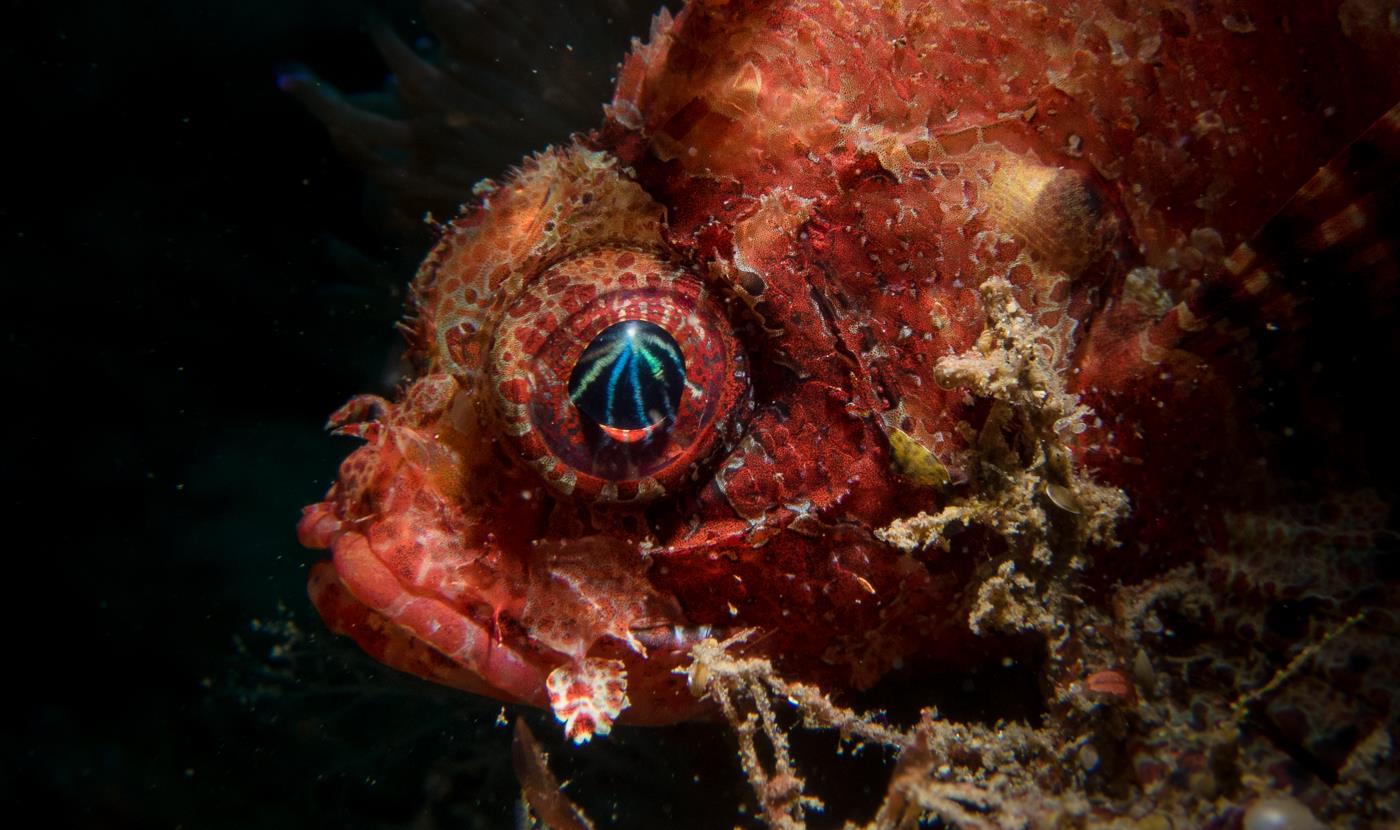
The Predatory Lionfish
Lionfish consume a varied diet of small fish, invertebrates, and molluscs. They have huge appetites and their high fish consumption, combined with their lack of predators, is a cause for concern in some regions of the world. To accommodate their appetites, lionfish can expand their stomachs to up to 30 times its original size.
Lionfish are highly skilled hunters and they will corner their prey before striking with alarming speed and devouring their victims in a swift bite. Lionfish are generally nocturnal, preferring to hunt at night. When prey is in short supply, lionfish have been known to prey on other members of their own species.
Invasive Species
In certain regions, lionfish are highly invasive and in order to support the ongoing marine ecosystems, lionfish are culled. Lionfish removal and population control programs are in place in many parts of the Caribbean. The culled lionfish are carefully prepared before they are cooked and eaten! In the Lembeh Strait, lionfish form part of the natural marine ecosystem, they are not considered problematic – and they make great underwater photography subjects too.
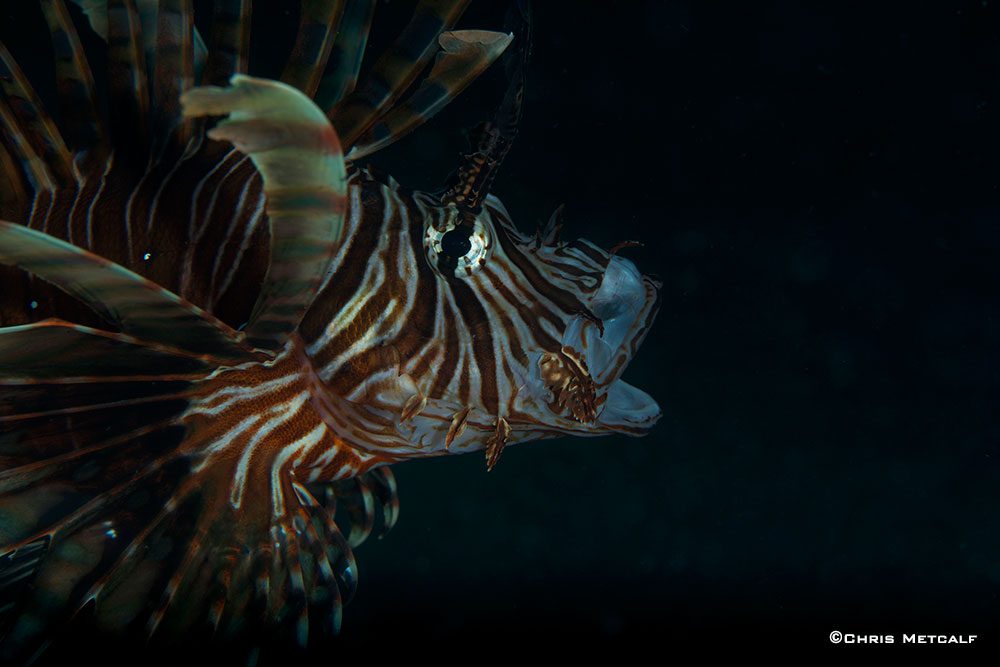
Lionfish Species in Lembeh
Of the multiple species of lionfish found in both the South Pacific Ocean and the Indian Ocean, here are the most common species of lionfish found in Lembeh:
Common Lionfish – Pterois volitans
Twinspot lionfish – Dendrochirus biocellatus
Shortfin lionfish – Dendrochirus brachypterus
Spotfin lionfish – Pterois antennata
Indian lionfish – Pterois muricata
Clearfin Lionfish – Pterois radiata
Kodipungi Lionfish – Pterois kodipungi
Gurnard Lionfish – Parapterois hetururus
Zebra Lionfish – Dendrochirus zebra
Pygmy Lionfish – Brachypterois serrulate
Lionfish Spines and Venom
Lionfish have 13 venomous spines and while a sting can be extremely painful, cause nausea and even impair breathing and affect heart rate, they are rarely fatal. Lionfish venom contains a potent mix of neurotoxins and neurotransmitters (most notably acetylcholine).
Social Habits
Although lionfish are often found in schools, males are highly territorial. Males will frequently fight other males by charging and aiming their spines at their opponents.
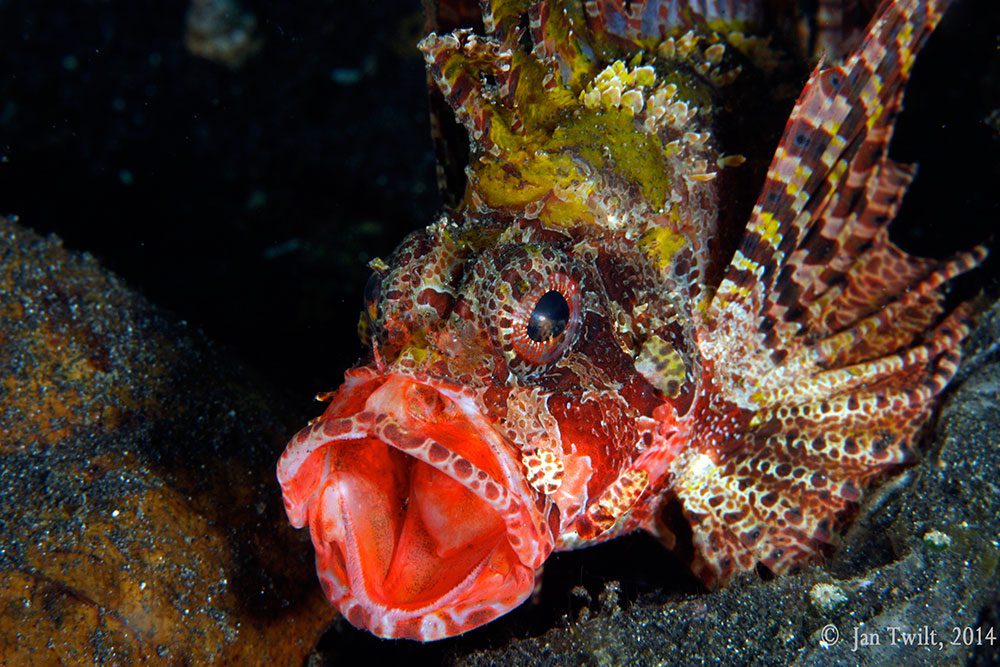
Reproduction and Life Cycle
Lionfish take approximately 18 months to reach sexual maturity. Once a female is ready to reproduce she will lay her clutch of eggs in the water column and the male will fertilize them. A clutch of lionfish eggs can contain anything from 2,000 to 15,000 eggs. Female lionfish will reproduce year-round and in a single year a female may produce up to 2 million eggs. This further adds to their capacity as an invasive species. Once fertilized, the eggs will drift at the mercy of the currents until they hatch.
In the wild, lionfish are thought to be able to survive for up to 15 years.
Where to see Lionfish in the Lembeh Strait
Lionfish can be found at almost all dive sites in the Lembeh Strait from the black sand muck diving sites through to coral reef sites, at any of the wreck dive sites and at combination sites such as Nudifalls. Lionfish are often found in shady areas, such as at the base of walls and wrecks. When diving at muck diving sites, look out for items of natural debris, such as tree branches, lionfish will often be found taking shelter here or hunting on the small fish and shrimps that also tend to inhabit these isolated items.
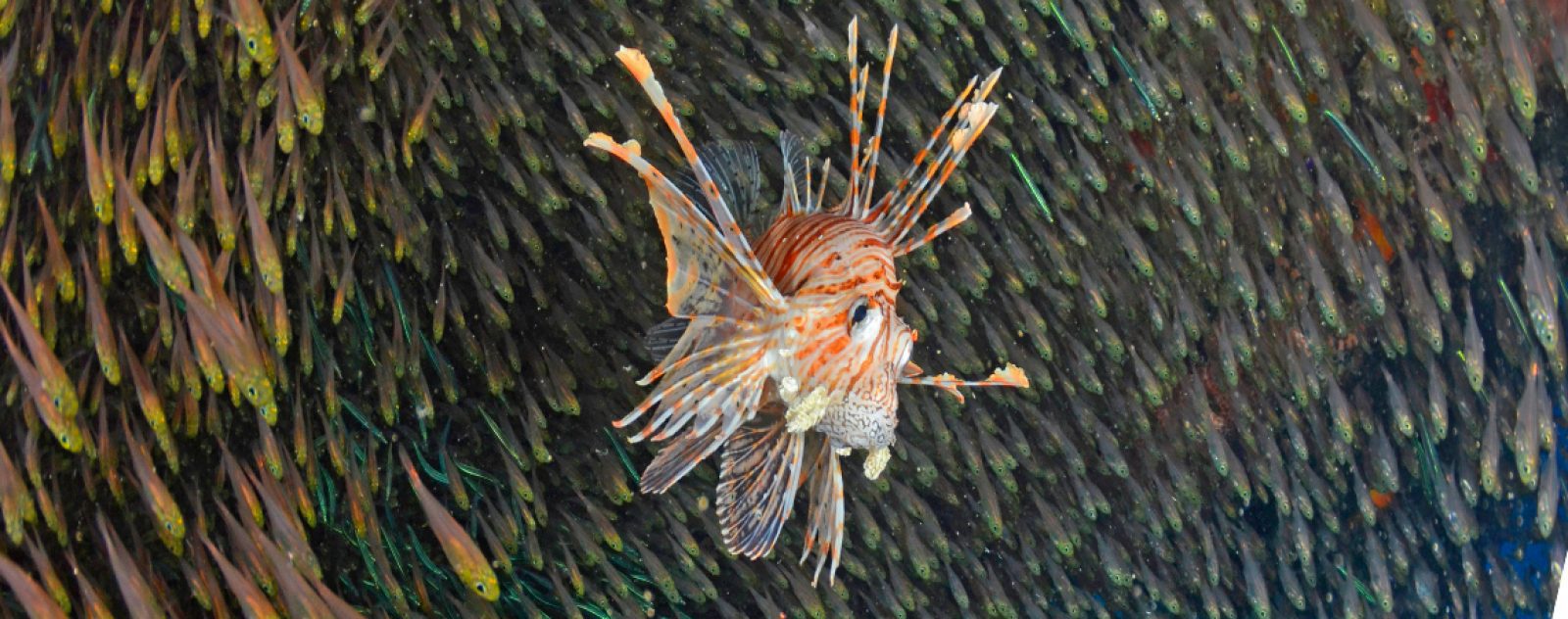
Lionfish and Underwater Photography
Lionfish make incredible underwater photography subjects and do not generally pose a threat to photographers. Although lionfish may allow you to enter their space, they are still quite challenging to photograph due to their habit of turning away. A slow approach and plenty of patience is in order!
Visit us in Lembeh
Are you planning your next dive trip? Come and visit us in Lembeh! For reservations and enquiries, contact us at reservations@LembehResort.com
More about marine life? If you enjoyed reading this Blog, you may also like:


